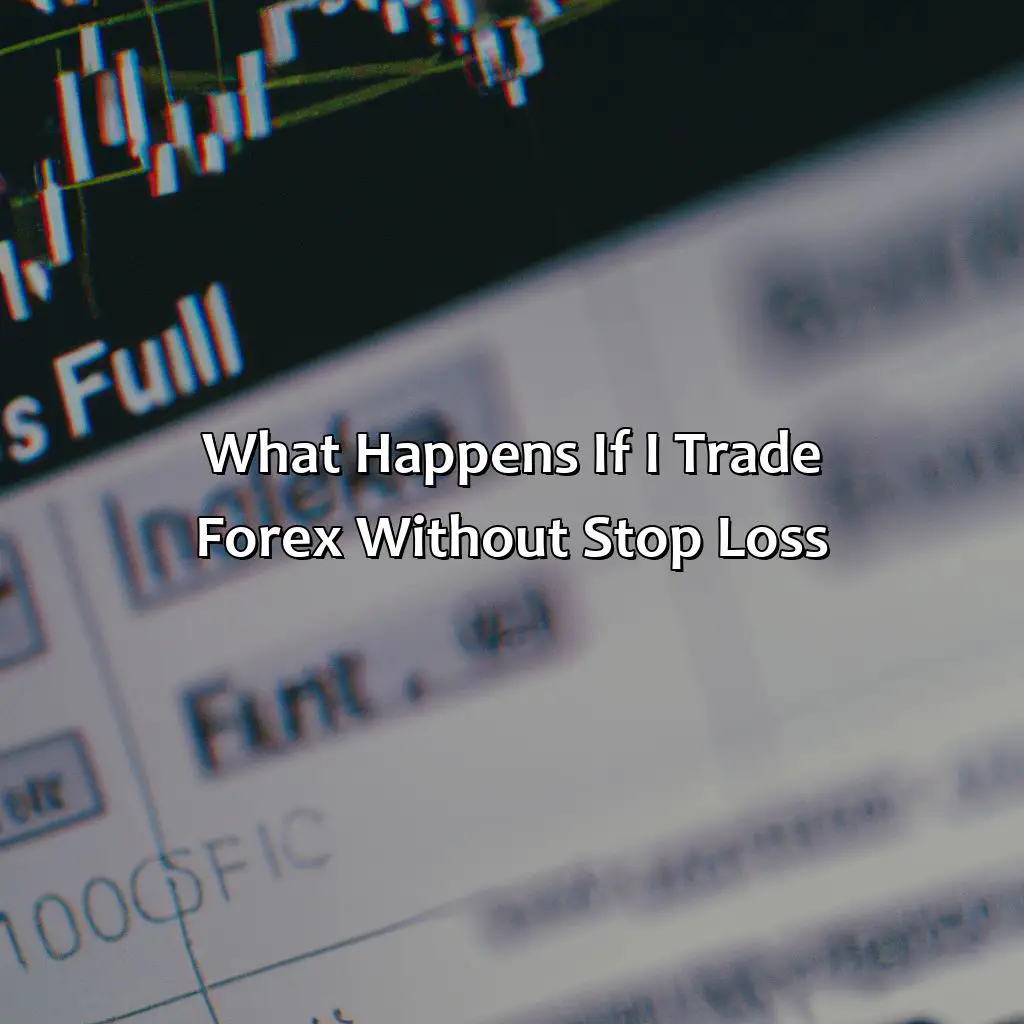
Key Takeaway:
- Forex trading without a stop loss can result in significant financial risk: Without a stop loss, traders can be exposed to significant market volatility and suffer steep losses.
- Stop loss is a crucial component of forex trading: It is an essential tool for risk management and helps traders to control their losses and preserve their capital.
- There are several best practices for setting stop loss in forex trading: Traders should consider technical and fundamental analysis, market conditions, and adjust their stop loss accordingly. A well-placed stop loss can help traders mitigate their trading risks and improve their chances of success.
Risks of Trading Forex Without Stop Loss
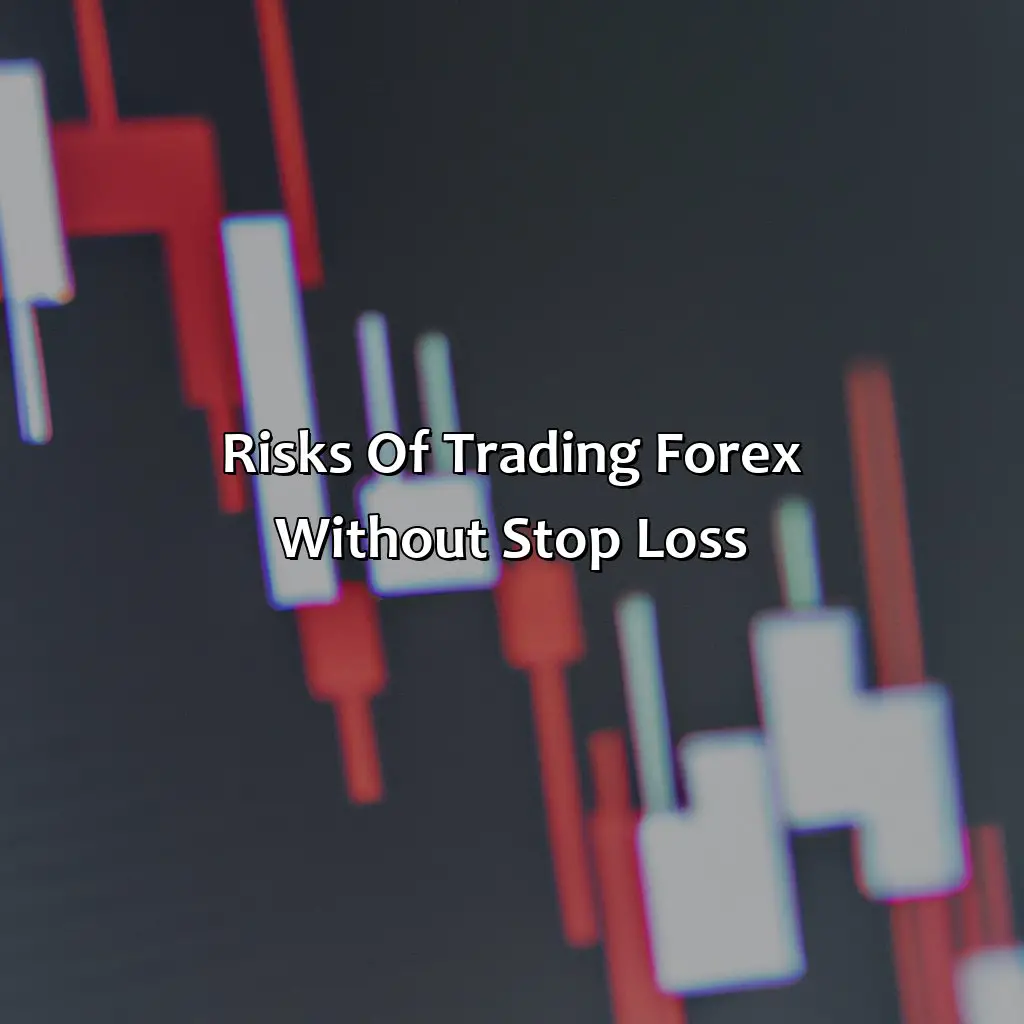
Photo Credits: forexbrokerreport.com by Nathan Rivera
Many traders are skeptical of using stop loss orders in forex trading. However, trading without one exposes you to a considerable financial risk. In the absence of stop loss orders, sudden market volatility can cause an unexpected movement in currency pairs, leading to a worse trade execution that could have been avoided by setting a stop loss order.
Not only does trading without stop loss exacerbate market conditions, but it can also negatively impact your trading psychology. The fear of loss can be so high that a trader may change their trading strategy, hold on to losing positions, or close their profitable positions too soon, ultimately failing to follow their own trading plan.
It is imperative to understand that trading without a stop loss has real-world consequences. In 2015, the Swiss National Bank unexpectedly removed the cap on the Swiss franc’s value, sending the currency soaring. Many traders who had not used stop loss orders faced losses worth hundreds of thousands of dollars.
To avoid such scenarios, traders must prioritize risk management and incorporate stop loss orders in their trading strategy. Despite the fear of being stopped out in a trade, it is essential to understand the advantages of trading with a stop loss, including limiting losses and preserving your trading psychology. Remember that proper risk management is crucial for long-term trading success in the forex markets.
The Importance of Stop Loss in Forex Trading
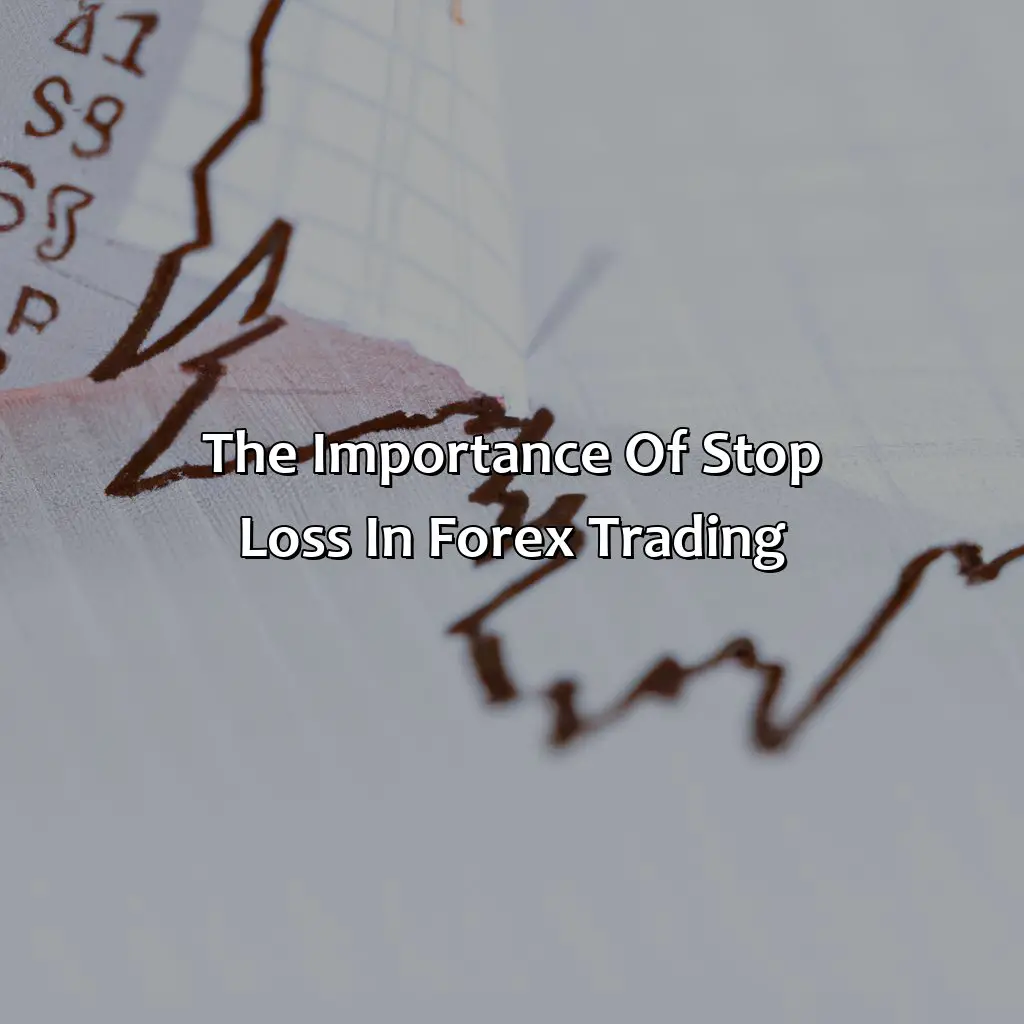
Photo Credits: forexbrokerreport.com by Alan Perez
To increase your chances of making money in Forex trading, with minimal risk, you need a strategy. Stop Loss is an essential tool. Learn the technical and fundamental aspects of Stop Loss with these three sub-sections:
- “What is Stop Loss?”
- “How Stop Loss Works in Forex Trading”
- “Benefits of Using Stop Loss”
This will help you create a successful trading plan that takes into account market conditions, risk management, and trading analysis techniques.
What is Stop Loss?
Stop loss is a crucial component of any forex trading strategy. It refers to a type of market or limit order that a trader places to prevent significant losses in case the market moves against their position. The stop loss order works by automatically closing an open position once it reaches a predetermined price, thereby mitigating trading risks and preserving the trader’s capital. It acts as an essential tool for managing risk in forex trading and helps traders reduce potential losses on trades.
In forex trading, stop loss acts as a safety net and limits the amount of money that traders can lose on any given trade. By setting appropriate stop loss levels, traders can protect themselves from adverse market fluctuations and ensure that their losses don’t exceed their risk tolerances. A well-placed stop loss order can allow traders to remain focused on their trading plan and avoid making emotional decisions under pressure.
Moreover, the use of stop loss orders helps traders maintain discipline over their trades and minimize unexpected losses incurred due to sudden market movements. Trading without stop loss exposes traders to unnecessary risks, leading to massive drawdowns, margin calls, and blown accounts. Forex trading is not free from risks, but by incorporating strategies like using Stop Losses makes all the difference.
According to Investopedia.com, more than 80% of retail traders fail due to inadequate risk management systems in their trades. Having sound risk management practices such as installing Stop Losses saves investors from this pitfall while risking less in their forex trades.
Stop loss is the insurance policy your trading strategy needs in the unpredictable world of Forex, where price action, trend analysis, support and resistance, breakout trading, scalping, swing trading, position trading, day trading, carry trade, arbitrage, and currency strength can all make or break your trades.
How Stop Loss Works in Forex Trading
In forex trading, stop loss is a critical aspect of an effective trading strategy. It protects traders from potential losses and limits their exposure to the market’s risks. Stop loss is an order that instructs brokers to close a position when the price reaches a predetermined level. It can be set using various methods like price action, trend analysis, support and resistance levels, and breakout trading. Scalping, swing trading, position trading, day trading, carry trade, and arbitrage are some strategies in which stop loss can be applied.
Traders must understand how stop loss works in forex trading to use it effectively. To leverage the benefits of stop loss orders, traders must choose parameters like the amount of money they are willing to risk or how many pips they are willing to lose. They must also ensure that they set stops away from volatile market areas such as around significant news releases.
One essential benefit of using stop loss orders is that it helps manage losses during emotional trading. Traders must stick with their trading plan and not make spontaneous decisions that could lead to more significant losses than necessary.
Trading without stop loss increases exposure to market volatility leading to substantial losses for traders when currency prices become unpredictable due to unforeseen events such as a global pandemic or political unrest.
According to recent reports by top brokers in forex, setting stop-loss orders 2-5 pips below or above support or resistance levels gives most traders the best results concerning reducing drawdowns.
Using stop loss in forex trading is like wearing a seatbelt while driving, it’s a must-have for a safe journey towards profits.
Benefits of Using Stop Loss
Using Stop Loss is essential for successful forex trading. It ensures trading strategy, risk management and technical analysis. Without it, traders expose themselves to significant financial risks. The following are the Benefits of Using Stop Loss:
- Helps Manage Risk – Prevents unlimited losses by limiting traders’ exposure to potential losses.
- Prevents Emotional Decision Making – Enables traders to make rational decisions without being influenced by emotions such as greed or fear.
- Incorporates Fundamental Analysis – Protects trades by using market news and economic events that could potentially impact trades.
- Utilizes Technical Analysis – Provides automated trades based on chart patterns and other indicators that signal when to exit positions.
- Saves Time and Effort – An automatic feature that eliminates the need to monitor the markets constantly, reducing stress on traders.
- Maintains Trading Discipline – Helps limit losses while adhering to your trading plan.
Using a stop loss while trading forex is one of the simplest but most effective ways of managing risk when executed correctly with a solid trading strategy.
Expert traders emphasize emphasizing the importance of utilizing stop-loss orders as well as other risk management techniques like hedging or diversifying in forex trading.
According to Investopedia, “Numerous studies have shown that long-term success in Forex trading requires more than just technical prowess; non-emotional decision-making and risk management skills rank among the most important skills needed.”
Forex trading without stop loss is like skydiving without a parachute, it’s an adrenaline rush until you hit the ground.
Consequences of Trading Forex Without Stop Loss
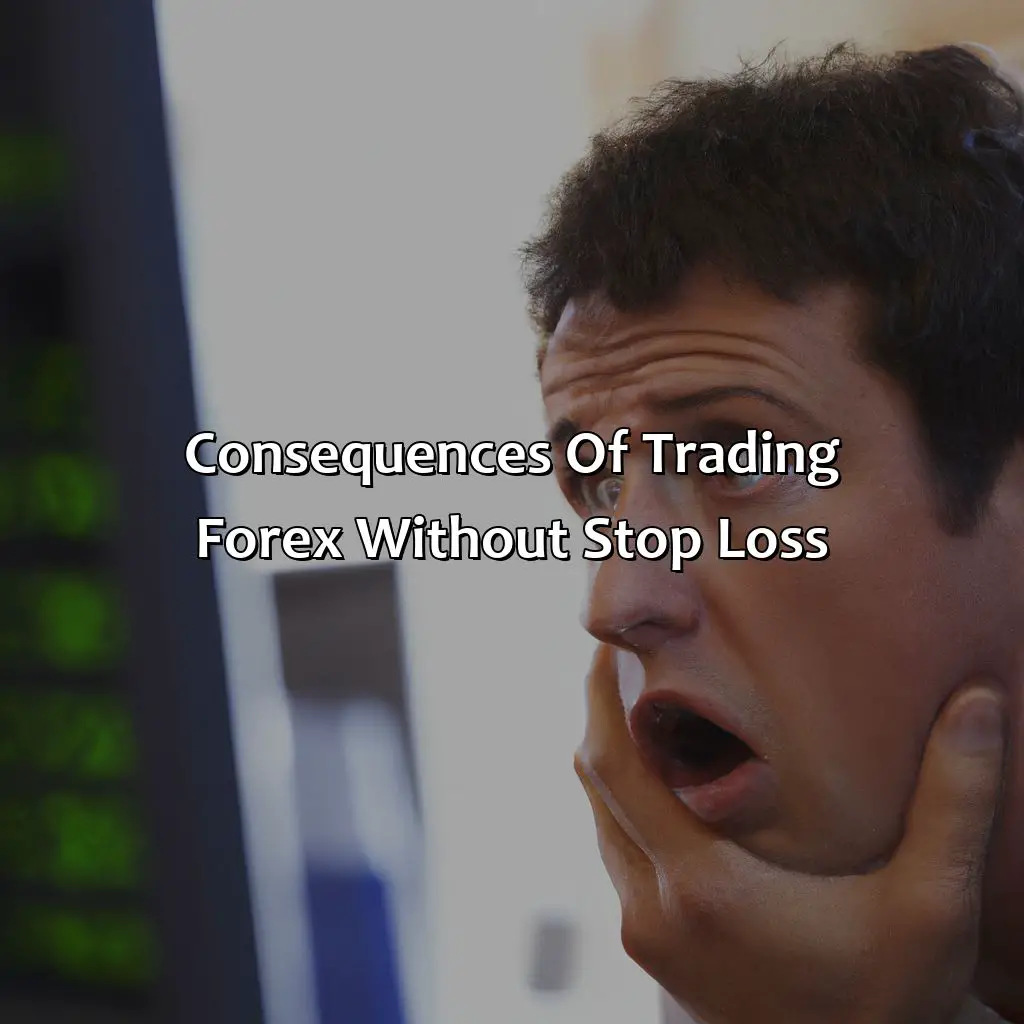
Photo Credits: forexbrokerreport.com by Peter Anderson
Know the consequences of trading Forex without stop loss.
Learn the importance of risk management, trading psychology and trade execution.
This prevents emotional trading and helps to deal with drawdowns and losses. Check out these sub-sections for solutions:
- Emotional Trading and Risk Management,
- Handling Drawdowns and Losses,
- Increasing Exposure to Market Risks.
Emotional Trading and Risk Management
Uncontrolled emotions and behavioral traits are integral to trading psychology. Effective risk management is essential for successful forex trading, along with emotional control and trading discipline. Trading without setting stop-loss orders can lead to haphazard decisions based on emotion rather than objective data, which increase risks in forex trading exponentially.
When traders fail to control their impulses during trades, they can incur significant losses that exceed their available margin. This can damage the trader’s self-esteem and lead to a series of flawed psychological behaviors that worsen losses through impulsive actions. Without using stop loss protections, traders may get carried away by greed or emotional attachment to a trade, leading to massive risks for negative impacts on their portfolios.
Successful traders anticipate possible profit and loss scenarios while minimizing negative impacts effectively using Stop Loss Orders. The use of stop loss guards against sudden market moves that could expose a trader’s portfolio thereby managing risks more effectively.
Research shows the critical role of stops can play in transforming traders’ fortunes. An USDCAD example analyzing the importance of setting stops showed an 18% difference between using stop-losses versus not implementing them over eight months. Without utilizing Stop Loss in Forex Trading, the potential effects cannot be overstated as it creates greater exposure to risks affecting overall profitability.
Don’t let financial risks draw you down, use stop loss in forex trading for safe trade executions.
Handling Drawdowns and Losses
Trading forex without stop loss exposes traders to financial risk and could result in significant losses. Without a stop loss, traders might find handling drawdowns and losses challenging, leading to panic-selling which may amplify the situation. This could lead to more significant market exposure, paving the way for extensive financial risks.
Therefore, it is critical for traders to set appropriate stop-loss levels when trading forex, which will protect their capital while ensuring that trade execution remains seamless. With stop loss orders in place, investors can comfortably adjust their positions with minimal stress.
An essential factor to consider when setting up a stop-loss order is choosing an appropriate level based on market conditions. This involves finding a balance between minimizing downside risk and providing sufficient room for the trade to play out positively.
Studies have shown that without a clearly defined exit plan or protection mechanism like a stop loss order in place, traders face many difficulties when dealing with drawdowns and overall losses. According to Trading Psychology Coach Brett N. Steenbarger Ph.D., “Intuition tells us that humans are prone to abandon well-conceived plans during periods of adversity,” leading them astray from their overall vision and goals.
Source: https://www.investopedia.com/articles/forex/06/nostoploss.asp
Forex trading without stop loss is like driving without a seatbelt – it only takes one bad move to lead to a financial crash.
Increasing Exposure to Market Risks
Without utilizing a stop loss, you may be increasing your exposure to financial risk and market volatility. The absence of risk management through the use of a stop loss exposes traders to potential losses greater than their intended risk levels. A sudden market shift can then cause significant damage to the trader’s account.
In forex trading, leverage amplifies the effects of small price movements. Without using stop loss orders, traders are at risk of receiving margin calls, which demand additional deposits after an account has fallen below its minimum requirements. This presents further financial risk to traders and increases their exposure to market risks.
It is also important to note that a lack of emotional control when trading without using a stop loss can lead to significant drawdowns and long-term losses. Traders who do not use proper risk management techniques expose themselves to unnecessary losses and lower overall ROI in forex trading.
According to Investopedia, while there is no foolproof approach to complete protection against volatility or unexpected market changes, implementing stop loss orders provide an essential safety net for traders seeking consistent profits.
Thus, it is critical in forex trading that traders implement appropriate levels of risk management by setting stop loss parameters to decrease exposure to potential losses and improve overall profitability. Setting the right stop loss is like finding the perfect balance between risk and reward in your Forex trading strategy.
Best Practices for Setting Stop Loss in Forex Trading
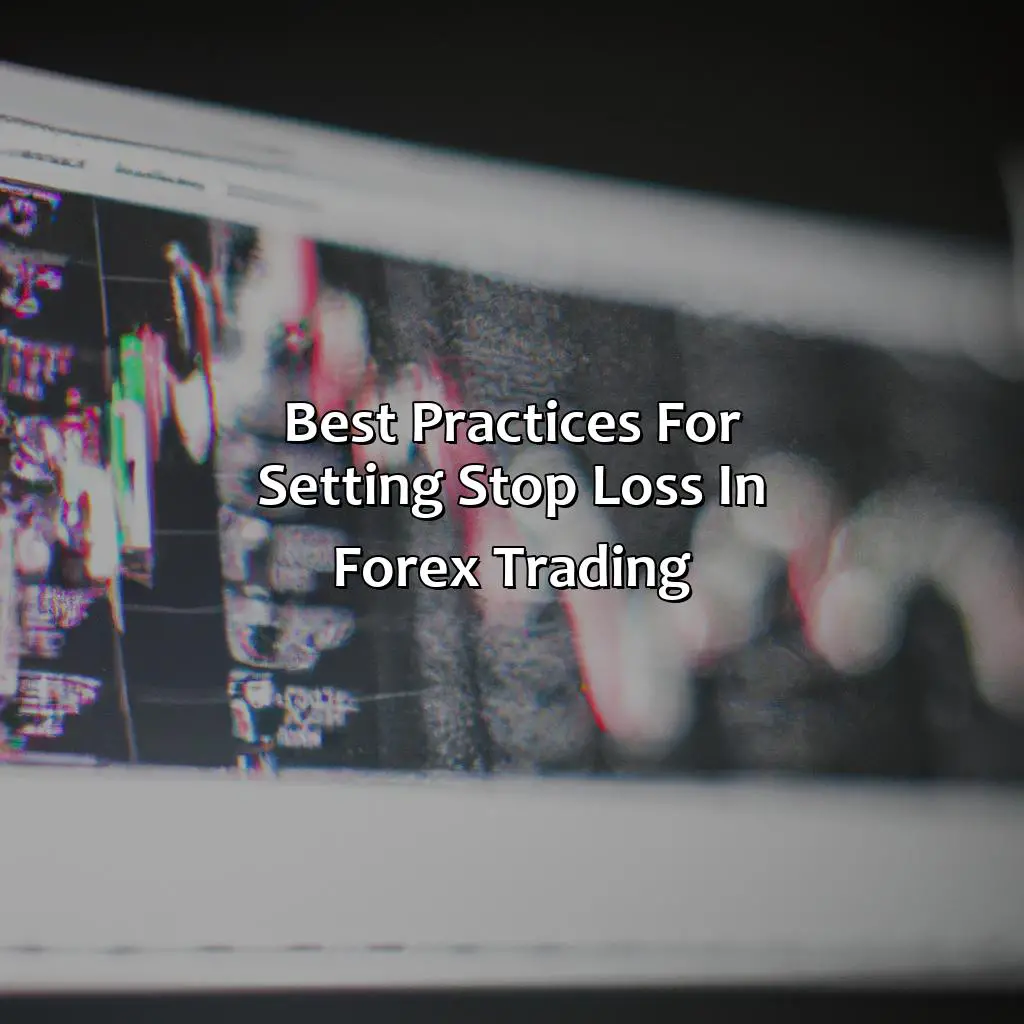
Photo Credits: forexbrokerreport.com by Samuel Clark
It’s key to have a stop-loss strategy for effective forex trading. Stop-loss orders help diminish losses and handle risk well. In this article, ‘Best Practices for Setting Stop Loss in Forex Trading‘, we’ll explore different types of stop-loss orders. We’ll also cover what to think about when setting stop-loss and how to adjust it in various market conditions. These sub-sections will review all aspects necessary for a successful stop-loss plan. This includes market analysis, trading strategies, and risk management.
Different Types of Stop Loss Orders
Stop loss is an essential component of a forex trading strategy that ensures effective risk management. In this section, we will explore different methods of setting stop loss in forex trading without using typical terminology.
To start with, traders can use three types of stop loss orders: the market order, limit order, and trailing stop. The market order involves setting the stop loss at the current price level and executing the trade immediately. In contrast, traders who prefer to set a specific price level use limit orders. A trailing stop is a dynamic option that allows traders to adjust their exit point according to market conditions.
Let’s take a closer look at each type of stop loss using a table:
| Type of Stop Loss Order | Definition | Use Case |
|---|---|---|
| Market Order | Stop Loss Order executed at current market price | Encourages swift action in fast-moving markets |
| Limit Order | Stop Loss Order at the specific price level defined by trader | Achieves precision in trade exit strategy |
| Trailing Stop | Dynamic Stop Loss Order that tracks price changes | Adjusts position according to changing market conditions |
Apart from these different types of stop-loss orders, traders must also consider several factors when setting them. These include overall market volatility, risk appetite for the individual trader, and entry/exit points. As market conditions evolve, traders should recalibrate their strategies accordingly.
Finally, it is worth noting that even seasoned traders can make errors in judgment while assessing potential risks of not using tight trading stops. For example, one story highlighted how an institutional trader made losses exceeding $2 billion due to an absence of effective stop-loss protection. This scenario emphasizes why it is crucial for every forex trader – novice and experienced alike – to employ stop-loss strategies successfully.
Stop loss is not just a safety net, but a crucial component in a well-planned trading strategy that considers various market conditions and analysis tools.
Factors to Consider When Setting Stop Loss
When deciding on appropriate stop loss levels in forex trading, several factors must be considered. Below are the key drivers to keep in mind when setting your stop loss.
- Market conditions: The volatility of the market and the currency pairs being traded affects stop loss levels. In volatile markets, wider stops may be more suitable than tighter ones.
- Trading strategy: The type of strategy employed will influence the placement of stop losses. For instance, scalping strategies may require tighter stops compared to swing trading strategies.
- Technical analysis: Stop loss levels should incorporate technical analysis indicators such as trend analysis, support and resistance, Fibonacci retracement, moving averages, RSI, MACD, Bollinger bands and Ichimoku Kinko Hyo.
- Fundamental analysis: Market-moving economic indicators, news events and geopolitical risks like Brexit or US-China trade war affect currency values and should be factored into every trader’s risk management plan.
- Risk management: Risk tolerance is an important factor in setting stop losses as it determines how much capital you are willing to lose per trade. Traders must look at their personal circumstances to set adequate stop losses that protect them from large drawdowns.
It is also important to note that traders should adjust their stop losses depending on changes in market conditions. Additionally, traders need psychological strength when it comes to sticking to their original stop-loss plan even when the trade goes south.
Pro Tip: When setting a stop loss level for a trade always make sure that you determine your reward-to-risk ratio first before placing any trades based on your trading system rules. This will help you identify if your potential profits outweigh your potential losses.
Flexibility is key when adjusting stop loss in Forex trading, adapting to changing market conditions and refining your trading strategy for optimal risk management.
Adjusting Stop Loss According to Market Conditions
Adjusting stop loss according to market conditions is a crucial aspect of risk management in forex trading strategy. As market conditions are dynamic and constantly changing, not adjusting stop losses can increase exposure to potential risks.
5-Step Guide for Adjusting Stop Loss According to Market Conditions:
- Conduct price action and trend analysis to determine the current market conditions.
- Identify key support and resistance levels to determine potential breakout trading opportunities.
- Consider strategies such as scalping, swing trading, position trading or day trading based on market conditions.
- Adjust stop loss based on currency strength and arbitrage opportunity in relation to the trade’s time horizon.
- Regularly review and adjust the stop loss according to changes in market conditions.
It is worth noting that adjusting stop losses should not be solely based on emotion and fear of losses but rather focus on objective criteria based on the current market environment.
Not implementing appropriate stop loss strategies can lead traders down the path of losing big. In just one example, Nick Leeson, famously brought down Barings Bank in 1995 through unabated forex positions without proper protection stifling a fundamental lesson – risk management first.
Overall, traders must consistently evaluate their trades with attention placed on multiple factors such as market trends, volatility, technical indicators like support and resistance levels. This way they can mitigate downside risks while maximizing their main target – profits.
Five Facts About What Happens If I Trade Forex Without Stop Loss:
- ✅ Without stop loss, the potential losses can be unlimited as the market can move against your position without limit. (Source: Investopedia)
- ✅ Trading without stop loss removes an important risk management tool from your trading strategy. (Source: FXCM)
- ✅ Not using stop loss can lead to emotional trading, as traders may panic and exit their trades too early or too late. (Source: Admiral Markets)
- ✅ The lack of stop loss can also result in margin calls and account blowouts, which can wipe out a trader’s entire capital. (Source: DailyFX)
- ✅ Experienced traders often use stop loss to minimize their potential losses and protect their profits, which is essential for long-term profitability in trading. (Source: Trading Education)
FAQs about What Happens If I Trade Forex Without Stop Loss?
What happens if I trade forex without stop loss?
Trading forex without a stop loss can lead to huge losses in your trading account. Without a stop loss, you leave yourself exposed to large market movements, internet or personal problems, and emotional decisions that can wipe out your entire trading balance.
Can I access my trading account without a stop loss?
Yes, you can access your trading account without a stop loss. However, doing so can expose you to significant risks that could negatively impact your trading balance.
What are the risks of trading volatile pairs without stop loss?
Trading volatile pairs without a stop loss can expose you to significant risk, as these pairs are more prone to sudden price movements. Without a stop loss, you could find yourself with an open position that moves against you prematurely, leaving you with a losing trade.
Can hedging strategies help me trade without a stop loss?
Hedging strategies can help you manage the risk of trading without a stop loss. However, it’s important to note that correlated positions can still lead to loss. Additionally, hedging requires patience and a long-term perspective, which may not be suitable for all market participants.
How can emotional intelligence help me trade without a stop loss?
Emotional intelligence can help you make more informed trading decisions when trading without a stop loss. By developing the ability to manage your emotions and stay patient during market reversals, you improve your chances of making a winning trade.
Is it possible to scalp trade without a stop loss?
Scalping trades usually happen within minutes, and traders must act fast to make predictions. With such a short timeframe, it’s risky to trade without a stop loss. A single market reversal could result in a huge loss if you don’t have a stop loss in place.

